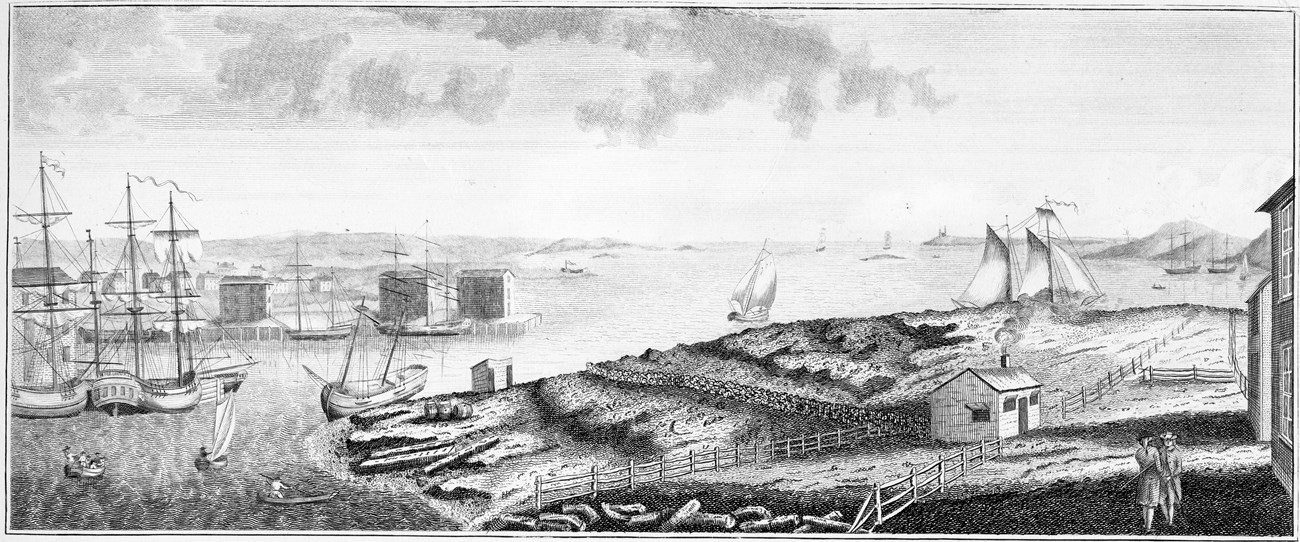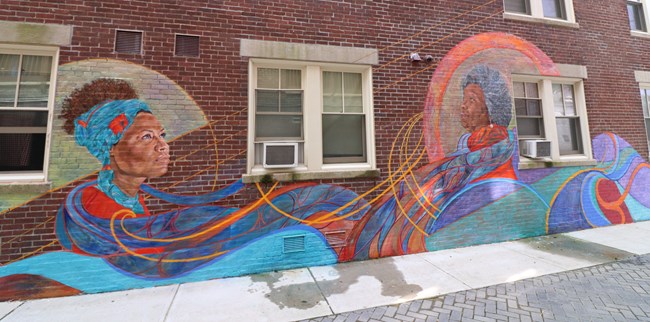Last updated: August 10, 2022
Article
El Punto: The Point Neighborhood
The people of this coastal region have always connected with inland communities and distant points, which continues to create the unique social histories and landscapes of Salem.
Located between Salem’s South River and Palmer Cove, “The Point” is one of several historic neighborhoods and longtime hubs of cultural exchange. Like all of Salem, the neighborhood is ever-evolving, perhaps most evident by its long history of names.
Naumkeag
Centuries before European colonists settled the area, Indigenous peoples lived and travelled through the peninsula making up present-day Salem. They named the area “Naumkeag,” an Algonquin word roughly translating “Fishing Place.” Indigenous people likely built seasonal settlements, traveled along the coastline, and fished in the vicinity of Salem’s South River, the present-day Point neighborhood.
Stage Point

NPS Photo
In the early 17th century, the arrival of British colonists forever transformed the Indigenous community and landscape of Naumkeag. Colonists quickly abandoned the name meaning “fishing place,” designating the colony “Salem” instead. And yet, fishing continued to have extraordinary influence on the people, culture, and economy of Salem.
Locally caught fish were the primary food source for Salem’s first British colonists. After settling the area in 1626, they soon chose a relatively flat point of land between the South River and Salem Harbor to construct fishing “stages.” The area was thus dubbed “Stage Point” for the wooden frames (stages) used to unload, clean, cure, and dry fish.
By the 1640s, Salem merchants had begun participating in a global economy stretching across the Atlantic, commonly known as the “Triangular” or “Triangle Trade.” At Stage Point, Atlantic cod fish were specifically prepared for export to slave plantations in the Caribbean. The fish was transported on coastal schooners, built at and departing from Stage Point shipyards.
Stage Point became and remained a central hub of Salem’s maritime economy through the 18th century.
La Pointe
“Stage Point” transformed in the mid-19th century with the building of the Naumkeag Steam Cotton Company, beginning in 1847. Multistory residential and commercial buildings, along with new bridges and streets, were constructed to serve a growing population of immigrant laborers.
By 1910, French-speaking Canadians made up a majority of the neighborhood’s population. Stage Point was redubbed “La Pointe,” or sometimes, “Petite Canada.”
The “Great Salem Fire” swept through La Pointe on June 25, 1914. While the majority of residential and commercial structures were lost, the neighborhood itself was far from destroyed.
Once again, the area between Salem’s South River and Palmer Cove was transformed. Neighborhood streets were reorganized. Buildings were carefully constructed to mitigate the fire hazards of a densely populated area. The rebuilding of La Pointe created a unique, urban landscape that continues in the Point today.
El Punto

Courtesy of North Shore Community Development Coalition (North Shore CDC)
Following the closure of Naumkeag mills in 1953, “La Pointe” demographics shifted with an increasing population of Latino and Spanish-speaking immigrants. Over time, the neighborhood became “The Point” or “El Punto.”
In 2017, North Shore Community Development Coalition (North Shore CDC) founded the Punto Urban Art Museum (PUAM). Once best known for its fishing stages, and later for its industrial mills, today El Punto is best recognized by the large, outdoor murals celebrating a diverse, community heritage.
The ever-evolving neighborhood remains an international community, home to the majority of Salem’s foreign-born population. Although a predominantly Dominican community, global ties to Central and South America, Africa, Asia, Canada, and England continue to thrive in El Punto.
The most recent addition to its long list of names came in 2014, when the National Park Service designated “The Point Neighborhood Historic District” as part of the National Register of Historic Places.
